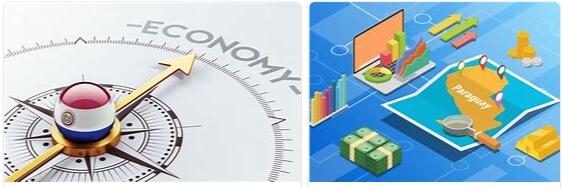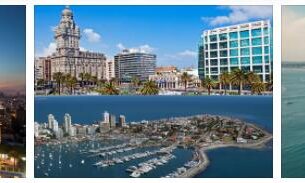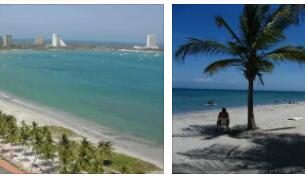ECONOMY: GENERAL INFORMATION
The possibilities available to Paraguay would be varied: the subtropical climate and fertile soils allow numerous crops; forests have precious essences; the rich pastures favor a flourishing livestock; the hydroelectric assets are huge; unlike many other Third World States, there are no overpopulation problems. However, various conditions linked above all to very specific government choices, in particular to the political isolation of the dictatorial regime, which for decades governed Paraguay, and the closure to innovative impulses coming from abroad, have determined a considerable economic delay in the country. It is also true that the very lack of access to the sea has always been a strongly negative factor. In practice, however, economic power has constantly remained in the hands of the ancient landed oligarchies, to the detriment of an emerging entrepreneurial class, which has long been mortified in its expectations. From the mid-seventies of the century. XX (even if the production structure was still essentially based on agriculture) the economy, also favored by a period of political stability, was characterized by a strong development linked above all to the construction phase of large hydraulic works for the production of electricity: Paraguay, already self-sufficient in the energy field since 1976 when the Acaray hydroelectric plant on the Paraná river was completed with funding from Brazil and Argentina, Itaipú, located like that of Acaray on the Paraná River, and destined to supply one of the largest water plants in the world. The gigantic dam was built together with Brazil and saw the first turbines come into operation in 1982. The construction of the dam and in general the powerful water potential of the country determined, almost suddenly, the “discovery” by the great international capital of possibility of the Paraguayan economy and the advantages deriving from making massive investments in the country; in fact, the inflow of foreign money was very significant, attracted by an economic boom of considerable intensity (rate of increase of the national product of over 10% per year in the five-year period 1977-81). On the other hand, this sudden economic growth also led to the increase in smuggling on the border with Brazil.
During the 1980s a period of bad harvests, the fall in agricultural prices and Brazil’s non-payment of electricity were some of the causes that led to the crisis, causing a slowdown in GDP growth and an increase in inflation. (average rate of 22%), unemployment and foreign debt; to this was added, also due to the effect of a sustained demographic increase, a notable decline in the level of per capita GDP, which only rose again during the 1990s (up to $ 2000 in 1997). In the 1990s, economic liberalization reforms were introduced and the country opened up to foreign investments; contextually, attempts have been made to consolidate public finances and promote foreign trade; however, these reforms have failed to yield long-term positive results. GDP, after the decline at the end of the nineties, has returned to rise steadily since 2003. In the early 2000s, growth was good (GDP of US $ 16,006 million in 2008, GDP of US $ 2,601) and the foreign debt decreased. Despite these signs of recovery, the country’s economic development is still hampered by inflation, which continues to increase, by the lack of transport and telecommunications infrastructures, and by widespread corruption. The situation of territorial disparity remains (industrial investments and infrastructure investments are mainly concentrated in the richest regions and urban agglomerations) and between social classes.
ECONOMY: INDUSTRY AND MINERAL RESOURCES
According to Businesscarriers, the industrial sector has always been a neglected sector of the economy of Paraguay (which remains one of the least industrialized countries in Latin America), given the traditional opposition of large landowners. However, it participates for 21.4% in the formation of the GDP and employs 15.7% of the population. With the establishment of a more liberal policy it has undergone a certain diversification. Most of the large industrial plants are located around the capital, in the Central department and in the Asunción region. The main sector is of course the food sector and includes complexes for the preservation of meat, sugar refineries, oil mills, mills, breweries, distilleries (rum, alcohol): with the processing of tobacco, it provides a huge contribution to manufacturing production. Also important are the chemical, petrochemical and textile industries, which mainly concern cotton; wood, paper, leather and ceramic processing and the production of cement and tannin were also widespread. However, due to international competition, the products of Paraguayan industries are mostly aimed at the domestic market. § The mineral resources ascertained are rather scarce, limited to a few deposits of manganese (in Ibicu), copper (in San Miguel) and iron; However, adequate geological prospecting is lacking, with the exception of the oil surveys in progress in the Chaco: pending good findings, the state oil company Petropar was founded in 1981. An oil refinery is active in Asunción. 


